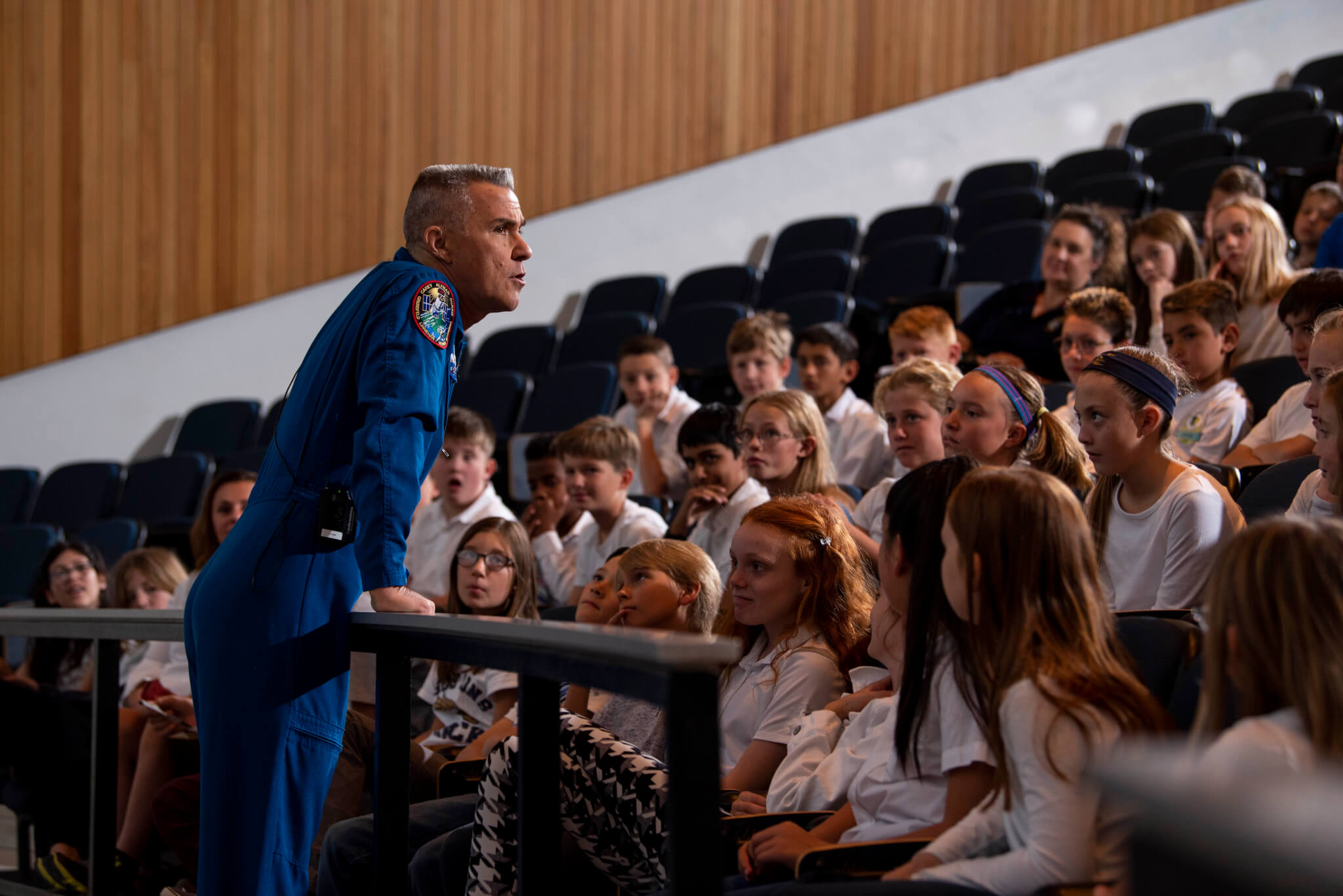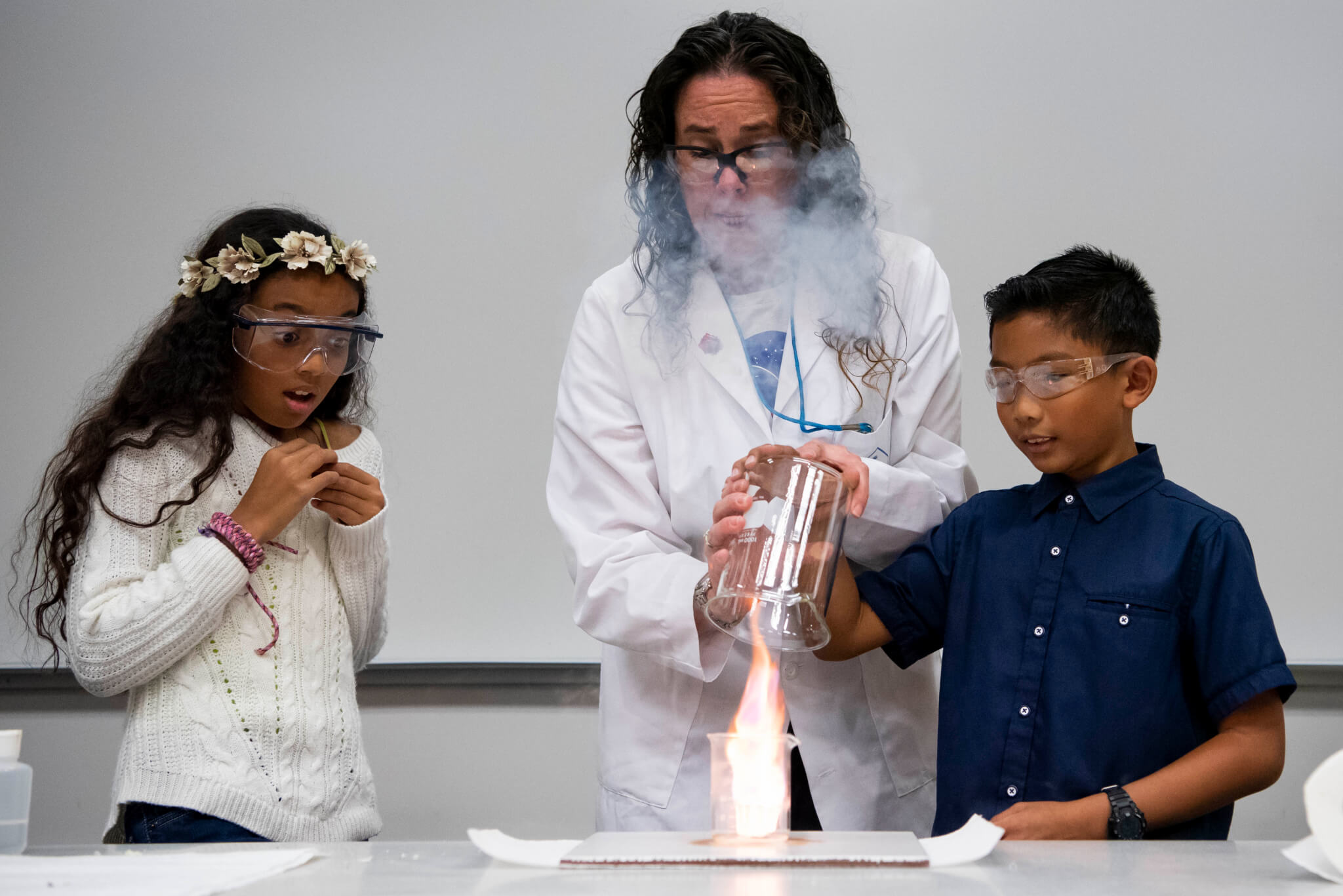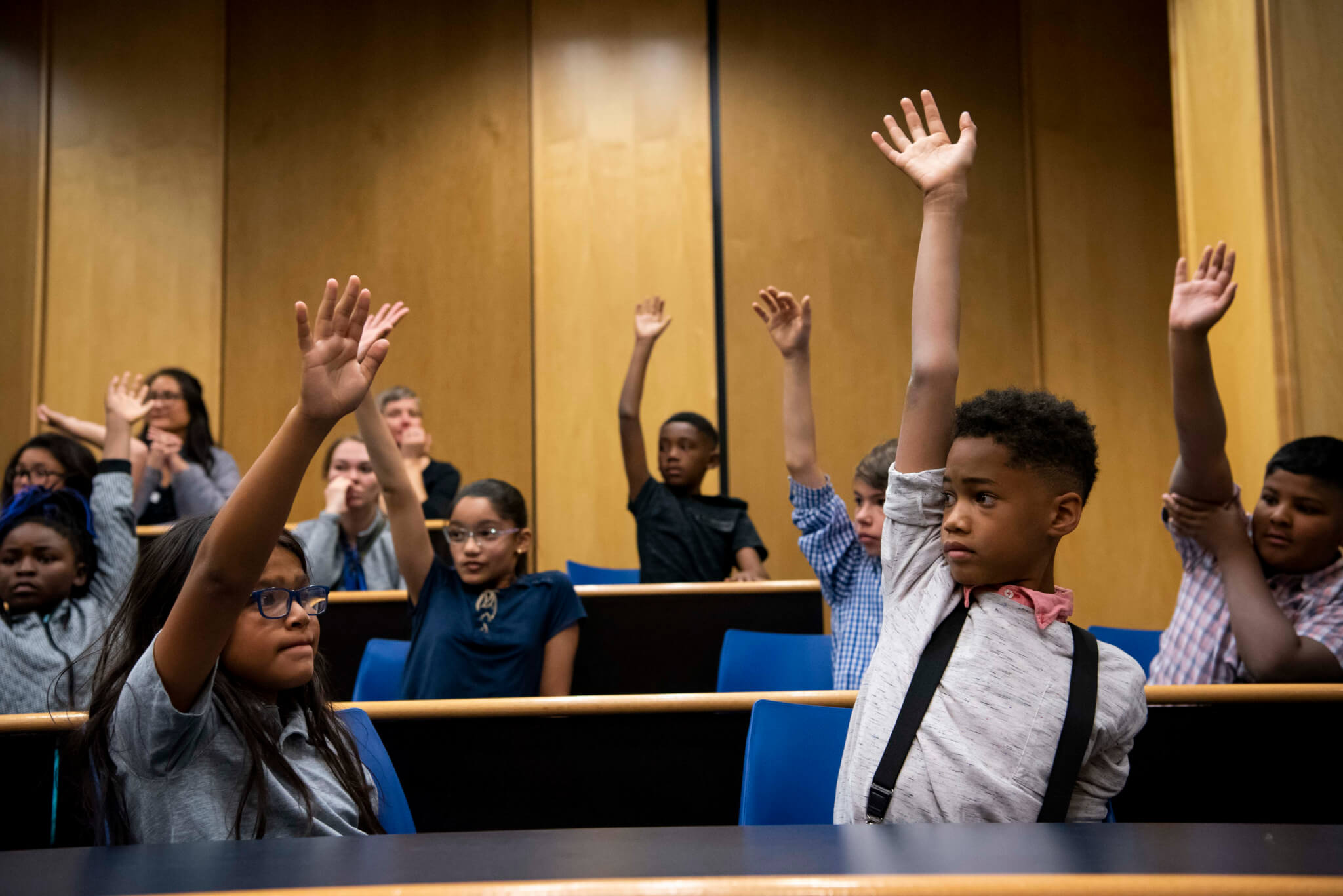Air Force Academy hosts annual “Audience with an Astronaut”

Story by Jennifer Spradlin, Oct. 9, 2019
U.S. AIR FORCE ACADEMY, Colo. – Retired Air Force Lt. Col. Duane G. “Digger” Carey, a former NASA astronaut who piloted the STS-109 Columbia mission in March 2002, spoke to more than 300 fifth and sixth graders from schools across the Front Range at the Air Force Academy, Oct. 9.
The annual “Audience with an Astronaut” event is held in partnership with the Space Foundation and highlights science, technology, engineering and math education as well as the role of the space industry.
Carey shared his journey from childhood poverty in Minnesota to a career as a fighter and test pilot and later as astronaut to demonstrate a non-traditional path to success.
“I hated school so much as a kid I’d hide out in the woods during a blizzard to avoid school,” he said. “I missed school more than 60 times during my first and second grade, and even though I later graduated from high school, I didn’t pay enough attention during class and didn’t earn very good grades.”
As a young man he worked a variety of odd jobs, including bartending, where he later met a Vietnam veteran who flew fighter aircraft. That conversation led him to become interested in aviation, although he soon realized that he would have to get a college education first.
“I want to let you in on a secret that I didn’t learn until I was in college: math supercharges your brain,” he said. “You don’t have to like it, you don’t have to be good at it. I wasn’t that smart, but in working hard on math you will get better at all your other subjects – even sports or dance.”
He encouraged the students to pursue their own goals a lot sooner than he did. Those steps included gathering the credentials and education they would need for their fields, which he attributed to his ability become an astronaut.
Carey challenged the students to be first people to ride dirt bikes on Mars and answered questions on everything from space travel to the effects of gravity.
Students also took part in separate sessions that highlighted how fun chemistry, physics and virtual reality technology could be.
“Space is really something you can use to get children excited about STEM,” said Chrys Rheinbolt, Space Foundation program manager for education. “Meeting an astronaut is a big thing for these kids but so is working with cadets – people closer to their own age in STEM-related programs and who the kids can look up to.”

